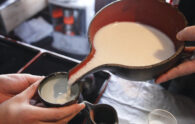Who is giving talks about the ILC for students? Many places. Oshu has provided talks for every second year junior high school student in the city since 2014, and Ichinoseki and the Southern Iwate Regional Development Bureau are also providing classes for junior high school students. I could go on: local newspapers send their reporters out for talks, and a group of students at Iwate University has been doing so as well.
Most of these talks are for junior high school students. In Oshu, we tried something new: we would hold classes for elementary school students (5th and 6th graders) and city employees would teach these themselves.
Elementary schools are busy, so we decided to make these classes opt-in instead of mandatory. Last year, the year we started, we gave talks for 7 schools (out of 27), or 8 schools if you count a similar talk held for students and the PTA at another elementary school. I was lucky enough to participate in these with my colleagues, Kotaro “Jack” Watanabe and Hidekazu Takahashi.
I’ll be honest: I was worried how well talks about the ILC would translate to an audience of elementary schoolers. Should we start talking to these kids about elementary particles when they hadn’t learned about atoms yet? If we didn’t do this right and tried to explain too much, and badly, we’d end up sounding like the technobabble from Star Trek. I had enough memories of squirming children from failed lessons during my English teaching days to imagine how that would turn out.
Fortunately, we already had a powerful “weapon” at our disposal: the charming 24-minute video explaining the ILC for schoolchildren created by Iwate Prefecture. (Viewable here with English subtitles, or you can click on the video below) It’s got puppets. It compares the universe’s expansion to raisin bread. It also explains the key points of the ILC: what, where, and why. We decided to start our talks with this video, and I think that was a good move. The children watched the whole thing with interest, and so did the teachers behind them.
(Click the subtitles option from the button that looks like a gear)
We combined the video with another powerful tool: the prize. We told children that if they got all three answers to a quiz about the ILC correct, they would get Way Cool clear files decorated with a message about the ILC and some local Oshu attractions. This was also pretty effective.
After the video, we gave the quiz and our talk through a PowerPoint presentation.
We wanted the students to get a general idea of the ILC, and relate that to their lives as much as possible. Thus, the ultimate length of the ILC (50 km) became about 250 times around the school track. We showed them a map of where their school was in relation to the candidate site. The timeline for building and starting the ILC was expressed in how old these students would be: they would be middle schoolers by the time the Japanese government decided on the ILC, and they would be around 24 by the time the ILC was completely built and started running.
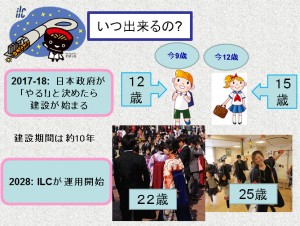
From Hada Elementary School talk: students were 3rd to 6th graders so gave two examples of what their ages would be during decision and building process.
We also talked about jobs: that the ILC would create many kinds of jobs, including but definitely not restricted to scientists. The community would also change and develop. For example, there could be more international residents, and there might be more facilities in the area. At the end of the talk, we asked students how their future dreams could relate to the ILC, and got responses from “I want to be a researcher and work at the ILC” to “I want to run a pet shop, so I can introduce Japanese pets to foreign people.”
Other than seeing children raising their hands to participate in general, the two most rewarding experiences last year were as follows:
First, we created an expanded version of our presentation for a talk at Hada Elementary school for 106 3rd to 6th graders and 30 PTA members, and managed to hold everyone’s interest. I think it was the principal who told us afterward one parent had said “As soon as it gets too technical, I’m leaving,” and he or she had stayed the entire time.

Hada is close to Mizusawa-Esashi Station (the shinkansen station) so we talked about development. “Maybe there could be more grocery stores, buses, other facilities”
Second, our ILC PowerPoint was used in another event called “Kids Workers” where 5th and 6th graders can try jobs they are interested in. 35 kids came to the ILC/scientist table (manned by Oshu city employees including Kazuki Sugawara). I unfortunately couldn’t attend, but I got to read the children’s’ sheets and see they were making the connections we had really wanted them to make:
“It was fun to do the experiments, and I learned that a big project called the ‘ILC’ is making progress, and I am looking forward to it in about 12? years.”
“I learned that when I am 25 years old the ILC will be completed, so I want to work at the ILC.”
“I learned that the ILC will need many kinds of people besides researchers and people to construct it. I learned that they will need people who are good at computers and English, so I want to study many subjects.”
This year, 13 elementary schools have signed up for ILC talks, which is almost twice what we got last year. We will keep working to refine our talks, have fun, and keep focused on what’s important. (If you’re interested in seeing our full PowerPoint, feel free to drop us a line at ilc(at)city.oshu.iwate.jp!)
Japanese
小学生向けのILC出前授業の取組 [13号]トマス・アンナ(奥州市)児童・生徒向けに、ILCの出前授業が多くの場所で行われています。奥州市では、2014年から市内の中学2年生を対象として出前授業を行っており、一関市や岩手県県南広域振興局においても中学生を対象として出前授業を実施しています。その他、地元の新聞会社が記者を講師として出前授業を行い、岩手大学の学生グループも同様の活動をしています。
これらの多くの出前授業は、中学生向けですが、奥州市では新しい試みとして2015年から小学生5・6年生向けに出前授業を始め、市の職員が講師を務めています。
小学校はあまり時間の余裕がないので、出前授業の実施は任意としています。取組を始めた昨年は、市内27校のうち、7校で出前授業を実施しました(別の事業ですが、児童とPTA向けの講演を含めると8校で実施)。同僚の渡邉「Jack」浩太郎主事、高橋秀和主任、私が講師を務めました。
正直に言うと、私は小学生向けのILC出前授業がうまくいくか心配でした。まだ原子を学んでいない子供たちに素粒子の話をすべきか?あまり詳しく説明したら、つまらないSFの話に聞こえてしまうのではないか。私は、英会話学校で教えていた時代に「失敗した授業」で見たそわそわしている子供を思い出し、今回失敗した場合にどうなるか想像できました。
幸い、私達には既に強力な「武器」がありました:岩手県で作成したILCを紹介する子ども向けの24分の動画です。(こちらで、英語字幕付きでもご覧いただけます。)人形が出演し、宇宙が膨張することをレーズンパンに例えます。そして、ILCの要点を解説します:何が、どこで、何のために。この動画を最初に上映することを決めて良かったと思います。子供たちは(後ろで見ている先生も)最後まで興味を持って見ていました。
私たちは動画ともう一つの「武器」を使いました:グッズです。子供たちに、もしILCのまとめのクイズ3問に正解したら、ILCと奥州市の名所が写っている格好良いクリアファイルをプレゼントすると伝えました。これもなかなか効果的でした。
動画を上映した後、クイズとパワーポイントの資料を使って話をしました。子供たちにILCの概要を把握し、出来るだけ身近に感じて欲しいと思い、最終的なILCの長さ50キロを学校のトラック250周分と表現しました。また、自分たちの小学校が、ILCの建設候補地に対してどこに位置するかを地図で見せました。ILC建設から運用までの時間の流れは、児童・生徒の年齢で示しました:日本政府がILC誘致を決定した時、子供たちは中学生になり、ILCの建設が完了し、運用開始時には24歳になっていると。
仕事についても話しました。ILCは科学者に限らず、沢山の種類の仕事を創出すると。地域も変わり、発展するでしょう。例えば、地域に外国人が増え、より多くの施設ができるでしょう。講演の後、子供たちにILCがどう自分たちの夢にかかわるかと質問し、「研究者になって、ILCで働きたい」や「ペットショップをやりたいから、日本のペットを外国人に紹介したい。」との回答がありました。
子供が手を挙げるのを見る度、やり甲斐を感じましたが、一番やり甲斐を感じたのは下記の二つです。
一つ目は、羽田小学校の3~6年生の児童106人とPTA30人の方々を対象として、出前授業をしましたが、何とか関心を持ってもらう話ができました。後で、校長先生が「あまりにも難しい話だったら帰ります。」と言ったPTAの方が最後まで聞いてくれたと教えてくれました。
二つ目は、ILCのパワーポイント資料は、小学校5・6年生が仕事を体験できる「キッズワーカーズ」というイベントでも活用されました。35人の子供が、ILC・科学者のテーブル(菅原一樹さんも含めた市の職員が講師)に参加しました。私は残念ながら出席できませんでしたが、子供たちが書いた学習シートを読み、一番感じて欲しかった点が伝わっていると分かりました。
「実験は楽しかったし、大きなILCという計画が進められ、12年?後に実現することを楽しみにしています。」
「私が25才になったら、ILCが完成すると分かったので、ILCで働きたいです。」
「ILCには、研究者以外にも建設に関わる人など様々な人が必要になると分かりました。コンピューターや英語ができる人も必要だと分かり、いろんな学科を勉強したいです。」
今年は、去年の倍近い13の小学校がILCの出前授業を希望しました。今後も、話の内容を改善し、楽しみながら、常に一番大事な目標を考えながら取り組んでいきたいと思います。 (小学生向けパワーポイント資料をご覧になりたい方は、ilc(at)city.oshu.iwate.jpまでお気軽に連絡してください。)
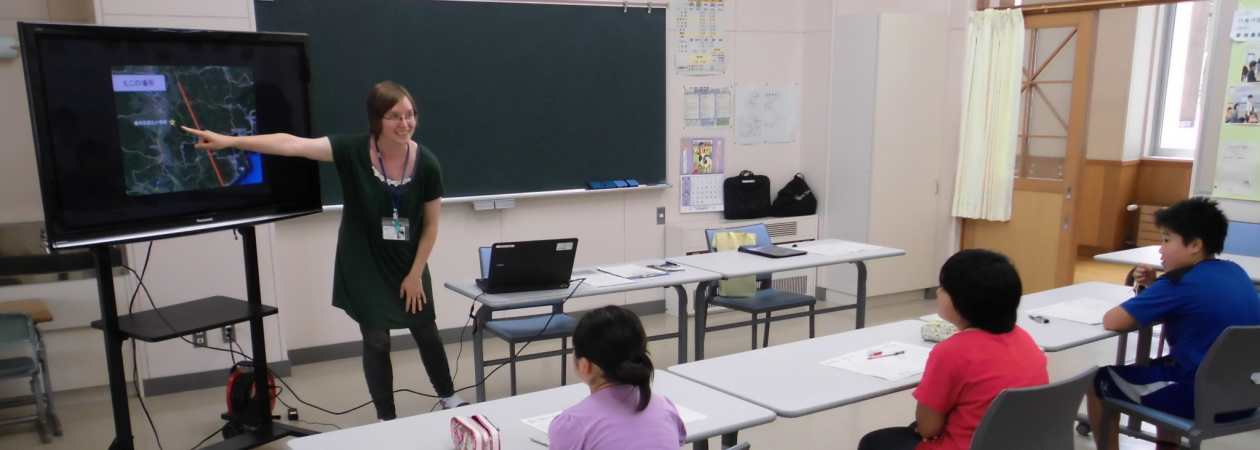
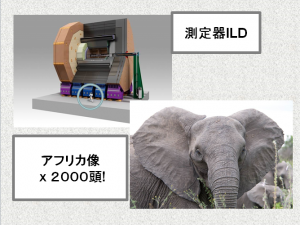
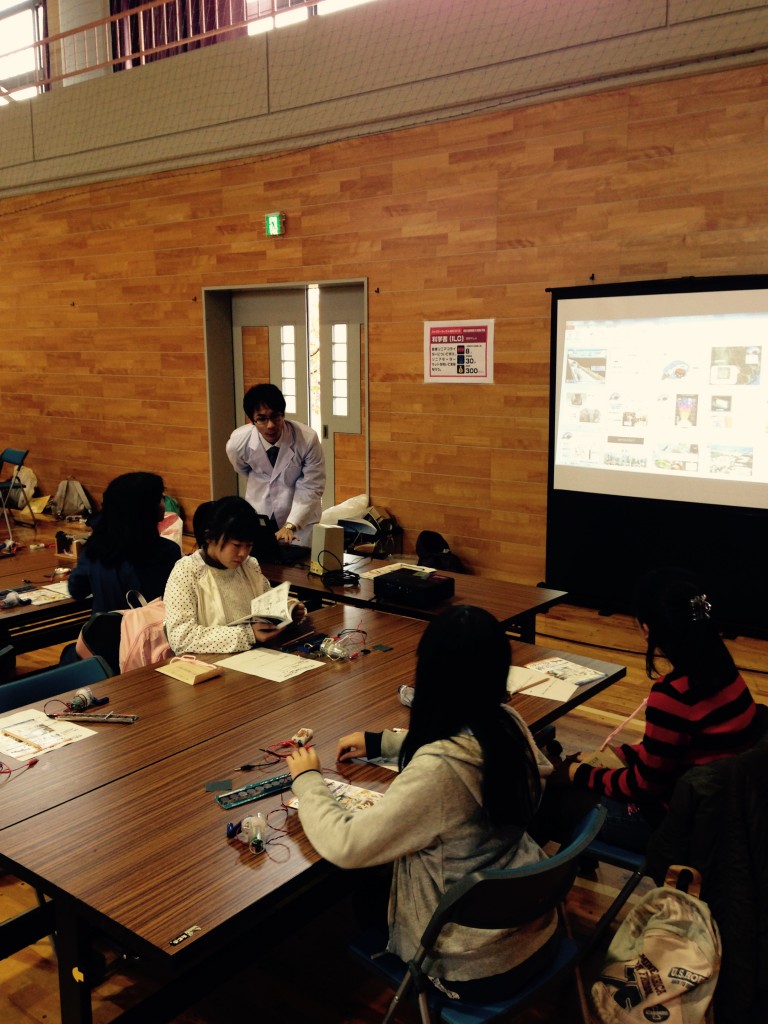
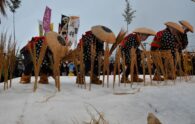
-195x124.jpg)
